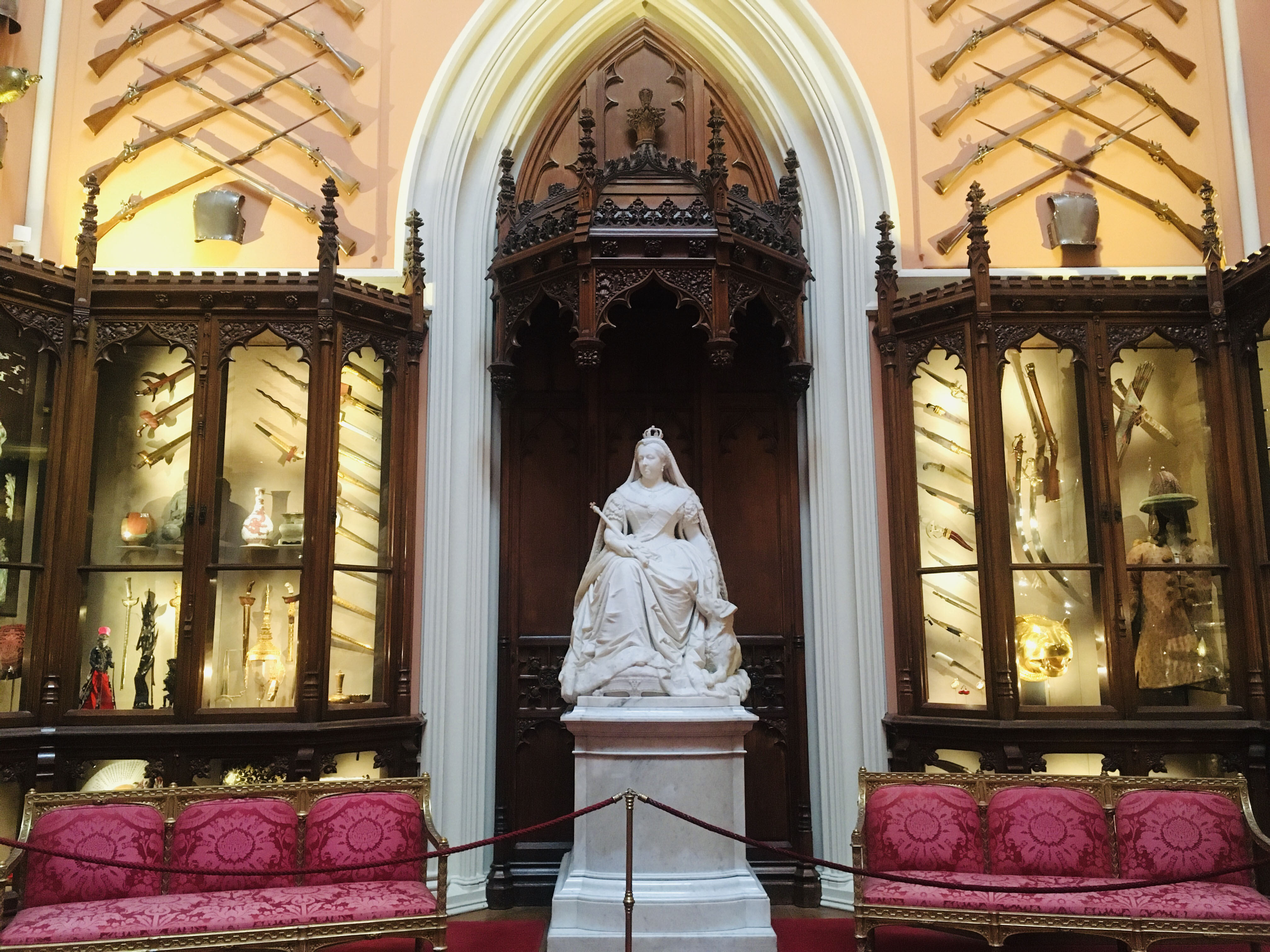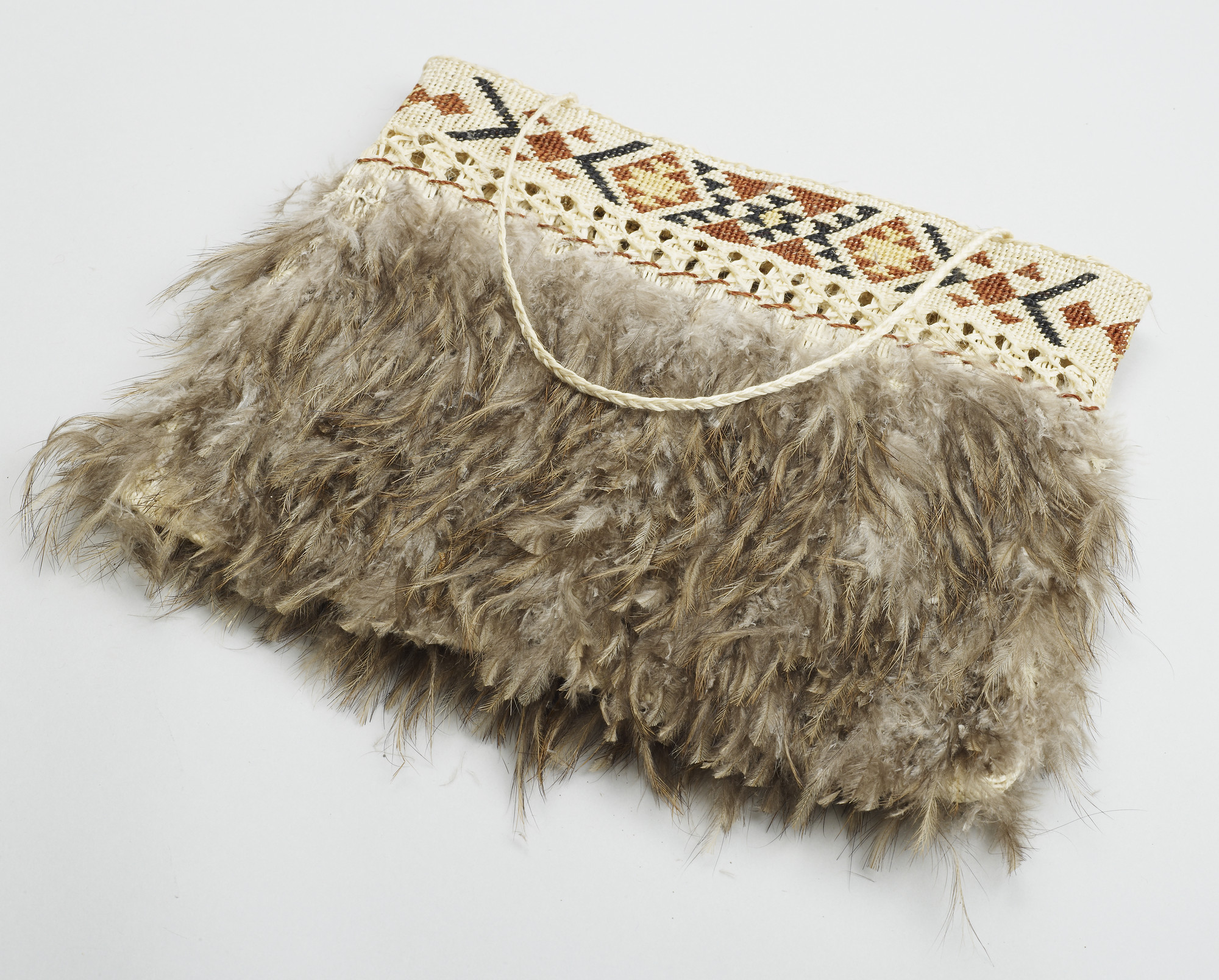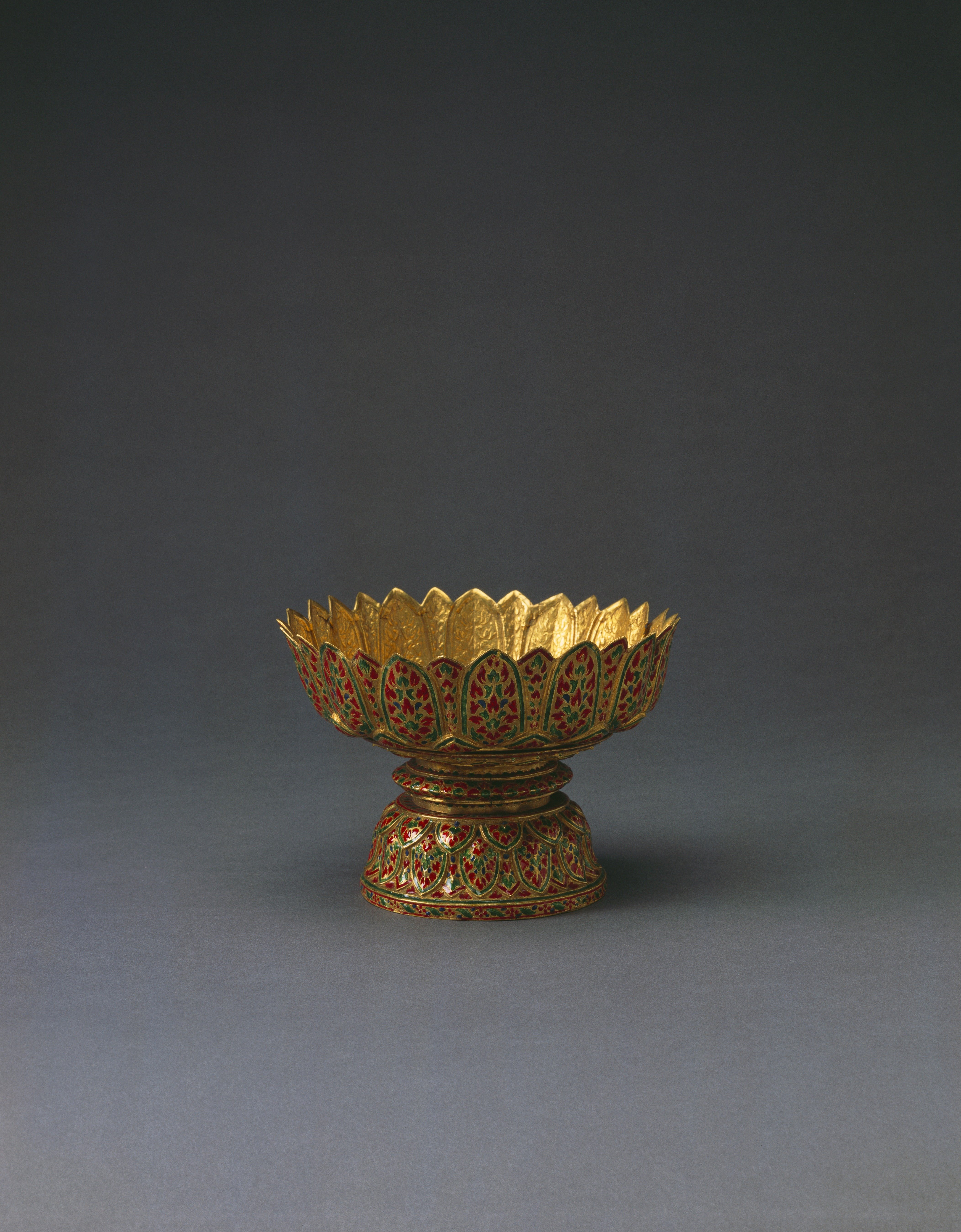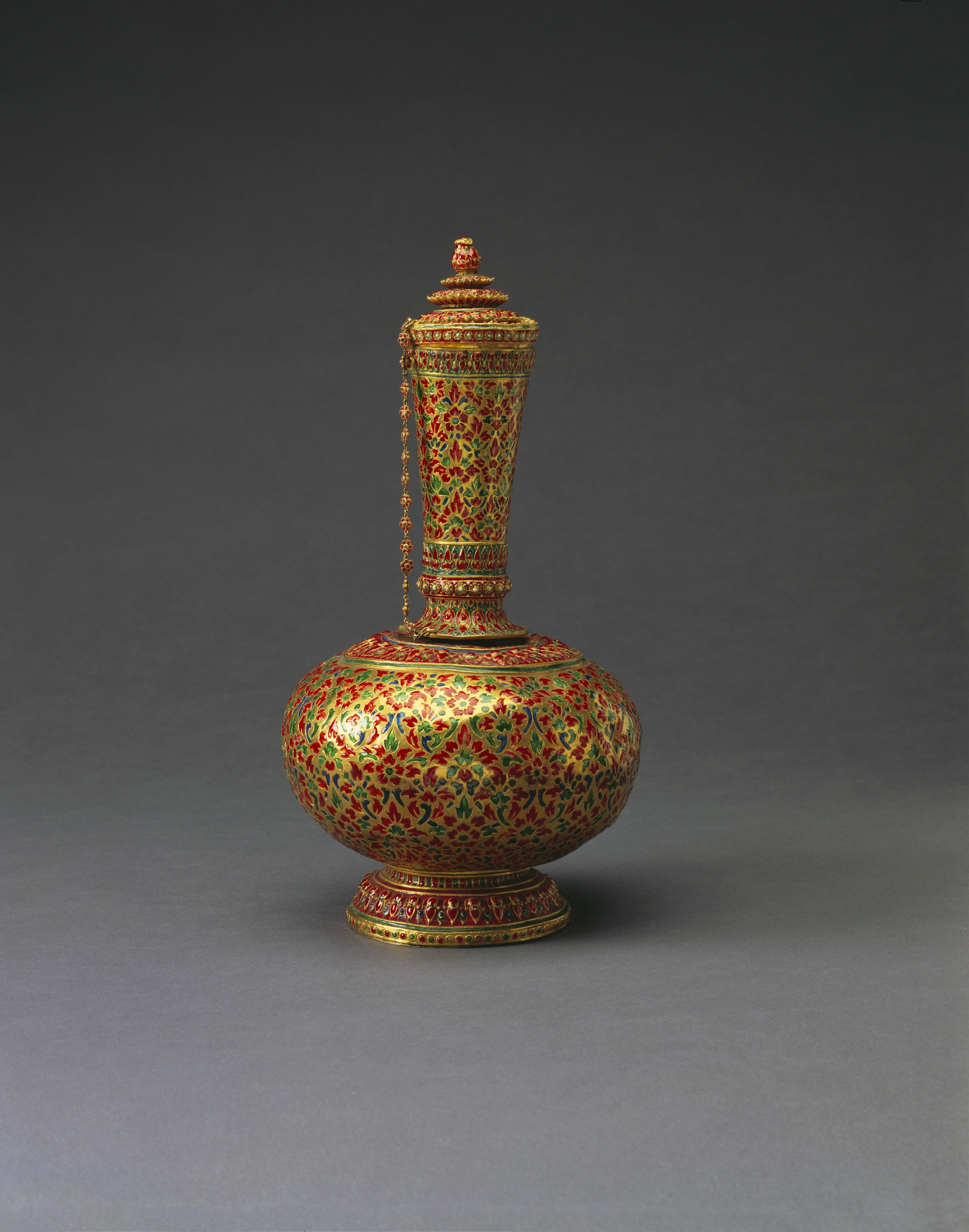
Grand Vestibule: The British Monarchy and the World
The Grand Vestibule at Windsor Castle reflects interaction between the monarchy and the wider world
Themes
Gifts, honour and status
Gifts have been exchanged by rulers from different parts of the world since the earliest times. Gift-giving was a means of cultivating good relations and demonstrating the donor’s power, wealth or cultural and technological sophistication. In 1811 and 1819, the Deys (rulers) of Algiers sent George III large quantities of firearms inlaid with coral, knowing that this material was valued highly in Europe.
Diplomatic gifts also reflect local expressions of status and honour, often using forms or symbols reserved for those of high status. The Hawaiian feather cape in the Oceania case was worn only by the most senior chiefs on ceremonial occasions. It is made of precious yellow and red feathers, the latter colour being associated with divinity in Polynesia. A gold-covered ceremonial stool from Ghana is meanwhile used by important chiefs and officeholders. It derives from the foremost symbol of the Ashanti kingdom, the Golden Stool, which according to tradition descended from heaven in the seventeenth century.
Gift-giving played a central role in State Visits made and hosted by Queen Elizabeth II. Each exchange is a gesture of goodwill, and enables world leaders to express something of their culture’s history and tradition through art.
Natural materials
The works of art in the Grand Vestibule incorporate a broad range of materials. Represented here are shell, hide, bone, porcelain, steel, ivory, woods of all kinds, lacquer, hardstone, raffia, human hair, silver and gold, coral, enamel, tortoiseshell, precious stones, feathers and coconut fibre.
These materials reflect the diverse ways that people across the globe interact with their environments and the ingenuity with which they use local resources for artistic expression. Official gifts often incorporate the most precious materials – such as the 719 diamonds in the glittering sword and scabbard given to King Edward VII for his Coronation in 1902. Some materials are meanwhile believed to hold spiritual power. The feathers of the kiwi bird on a bag in the Oceania section are thought by Maori to carry authority (mana) passed down through the generations.
As environments and cultures have changed, artists around the world have adapted their processes. A Zulu-style basket made from telephone wire demonstrates how traditional forms can be reworked to reflect the constraints and creativity of modern life.
Organic (plant and animal) materials are particularly fragile, being more susceptible to pests and light damage. As a result, some displays will be changed periodically to preserve the objects.
Trade and exploration
For many centuries, overseas exploration and trading ventures required the political or financial support of the monarch. The Hudson's Bay Company was granted a Royal Charter by Charles II in 1670 to trade fur in the northernmost parts of America. A hundred years later, George III personally helped finance Captain James Cook’s first voyage to the southern Pacific Ocean (1769–1771). George III also dispatched an embassy to China in 1792, with the aim of improving trading relations with the Qianlong Emperor (r.1711–1799). Although unsuccessful in this regard, the embassy returned with lavish gifts including jade, porcelain and intricately-carved lacquer boxes.
Commercial agreements have often paved the way for new diplomatic relations. In 1855, King Rama IV of Siam (now Thailand) signed a Treaty of Friendship and Commerce with Queen Victoria – a landmark agreement which enabled the establishment of a British consulate in Bangkok. When seven Siamese representatives visited the queen at Windsor Castle two years later, they brought gifts of gold and enamel flasks and a replica of King Rama’s crown.
Empire
Many of the objects on display are from regions which once formed part of the British Empire. They reflect the British royal family’s historic involvement in the expansion of trade, territory and institutions overseas, and the dispersal of British subjects across the globe.
In 1607, the first English settlers to arrive in what is now the United States of America named their settlement ‘Jamestown’ in honour of King James I. His son, Charles I, issued a royal charter in 1632 allowing English settlers in Maryland to establish the province as a British colony. Their arrival continues to be commemorated today. In South Asia, the British Crown assumed rule of large parts of India in 1858, when control of the region was formally transferred from the British East India Company. Queen Victoria was proclaimed Empress of India in 1877, and in the years that followed she received many gifts and loyal addresses from the subcontinent to mark her Golden and Diamond Jubilees.
The works of art in the Grand Vestibule reflect a range of local responses to British imperialism, from loyalty and cooperation to resistance and independence movements. Many are gifts, presented during royal tours or on occasions such as Coronations and Durbars. Objects taken in conflict meanwhile reveal the violent dimensions of colonialism and the concerted resistance of indigenous groups to intrusion on their land and ways of life. Five Zulu spears (assegai) in the Africa case were taken during the Anglo-Zulu War in 1879 when Cetshwayo, King of the Zulu, sought to curtail British ambitions in southern Africa.
In the eighteenth and nineteenth centuries, military leaders often presented the finest objects from the field of battle to the monarch as a way of demonstrating their success. Some monarchs have also taken a close personal interest in their opponents – George III and his son George IV were fascinated by Tipu, Sultan of Mysore and collected weapons and dress belonging to him after his defeat by the British in 1799.
Royal travel
Long distance travel by members of the royal family began in earnest in the second half of the nineteenth century. Queen Victoria’s children and grandchildren travelled overseas to examine first-hand the great sites of antiquity, and to cement diplomatic ties with parts of the British Empire like India, Canada and Australia which had never before received a member of the royal family. On display are gifts received by King Edward VII when he visited parts of modern-day India, Pakistan, Sri Lanka, Bangladesh and Nepal as Prince of Wales in 1875–76.
Rapid innovation in rail, sea and air travel made royal international tours the norm by the twentieth century. In 1901, King George V and Queen Mary (then Duke and Duchess of Cornwall and York) visited Australia, New Zealand, Canada and South Africa. They received an array of gifts including boomerangs and Maori staffs. Tours of this kind were widely photographed, giving worldwide publicity to royal engagements.
Queen Elizabeth II was the most travelled monarch in history, having journeyed over a million miles overseas. She made 188 official visits to Commonwealth countries by 2016, including during her Silver and Golden Jubilee tours in 1977 and 2002. Many took place aboard the Royal Yacht Britannia, which was launched in 1953 and which had conveyed members of the Royal Family and other dignitaries on 696 overseas visits by the time of its decommissioning in 1997.
Commonwealth
When Queen Elizabeth II came to the throne in 1952, she also assumed the role of Head of the Commonwealth. The Commonwealth is a free association of independent nations, which today has 53 members. They share values of friendship, loyalty and the desire for freedom and peace
Today, Commonwealth ties continue to be strengthened by a range of initiatives such as the Commonwealth Games and Commonwealth Heads of Government Meetings (CHOGM). Members of the Royal Family attend many of these events. CHOGM hosted Queen Elizabeth II at Windsor Castle in 2018.














